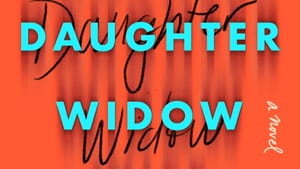Stay in the Loop
BSR publishes on a weekly schedule, with an email newsletter every Wednesday and Thursday morning. There’s no paywall, and subscribing is always free.
The mysteries inside
‘Mother Daughter Widow Wife’ by Robin Wasserman

A woman arrives in Philadelphia on a Peter Pan bus with no money, identification, or knowledge of who she is. So begins Robin Wasserman’s Mother Daughter Widow Wife, an investigation of memory and trauma that asks if our memories are what make us who we are. But it is also a study of women and the various roles and identities they play and discard.
Wasserman’s wandering protagonist receives the name “Wendy Doe” from the state, and a diagnosis of dissociative fugue state: “sudden, unexpected travel away from home or one’s customary place of work, with inability to recall one’s past.” Wendy agrees to undergo study at the Meadowlark Institute for Memory Research by Dr. Benjamin Strauss and new research fellow Lizzie Epstein. Eighteen years later, Lizzie has left science and is Strauss’s recent widow. She is visited by teenager Alice Clark, who is looking for information about her recently missing mother, Karen—aka Wendy Doe.
Lizzie and Elizabeth
Identities like those explored in this novel are often foisted upon women by men, as in the case of Augustine Gleizes, a woman diagnosed with hysteria in the 19th century and forced by her doctors to perform it for documentation. She becomes a touchstone for Wendy and the subject of a popular biography Lizzie later writes. Lizzie herself becomes “Elizabeth,” the name Strauss calls her, over time transforming from a promising scientist to a dutiful wife and keeper of her late husband’s legacy. Wasserman underlines this split by bifurcating her into two characters, with some chapters told by “Lizzie” in the third person and some by “Elizabeth” in the first.
Becoming someone else?
Wasserman also recognizes the ways in which these women limit and box in themselves and each other. Alice, who initially came looking for Benjamin, views Elizabeth only in relationship to him, referring to her as “the widow,” though Lizzie had the closer relationship with her mother. For her part, Lizzie refuses to forgive her own mother for leaving the family when she was a teenager. Her mother tries to explain the dichotomy of motherhood, comparing it to Wendy’s fugue state: “There’s this idea, when you have a child, that you’re supposed to become an entirely different person.”
The women of Mother Daughter Widow Wife find themselves embracing or running from these identities in search of recognition or erasure. In a sly irony of art imitating life, the characters follow an unnamed television soap opera over several decades, watching people who abandon, forget, or are retconned into new bodies. Wasserman employs a late twist straight out of a soap-opera trope, but she treats it realistically as the traumatic event that it is.
Despite ingredients of mystery, suspense, and soap, Mother Daughter Widow Wife is an interior and serious-minded novel. Wasserman strikes a clinical, unsentimental, almost detached tone in her prose, but ultimately, in addition to the slipperiness of memory and identity, this is a story of love, friendship, and family with an intense beating heart. The way these women find their way back to themselves is through each other.
What, When, Where
Mother Daughter Widow Wife. By Robin Wasserman. New York: Scribner, July 7, 2020. 336 pages, hardcover. $27.00. Get it here.
Sign up for our newsletter
All of the week's new articles, all in one place. Sign up for the free weekly BSR newsletters, and don't miss a conversation.

 Kirsten Bowen
Kirsten Bowen